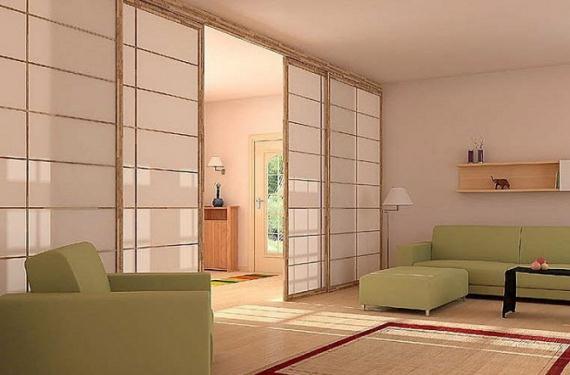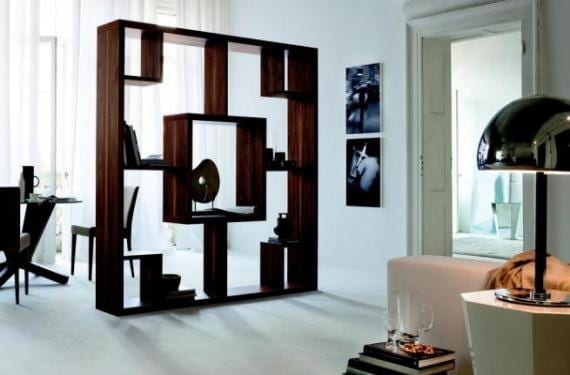
Having a very spacious room that acts as a living room and dining room is a privilege in most of today's small flats, but the truth is that many times we like that both environments have their own personality. Therefore, we need to physically separate them.
When it comes to separating environments, we can resort to various options. One of the most popular is use screens, which also have the advantage of generating a lot of privacy.

In addition, we must also take into account that the screens are very versatile, so we can play with them depending on space needs that we have at all times.
Another very popular option is to distribute the sofas and armchairs as dividers of environments between what is the living room and the dining room. If, in addition, we complement them with a different rug, we will still be able to better define each space.
Likewise, we can also decide on a shelving placed horizontally. It will be useful as a small library, while we will be able to delimit a cozy reading space, which we must complement with an armchair and a good lamp.
Finally, a good advice is that we take into account the structural elements that the house has. For example, ceiling beams They can help a lot to visually divide the two environments of dining room and living room. In the case of pillars or columns, we can generate small separating portals by placing plants or sculptures that reinforce each space. Imagination is the ideal complement for us to effectively use decorative elements as visual separations.
Source: Total household
Image source: Interiors